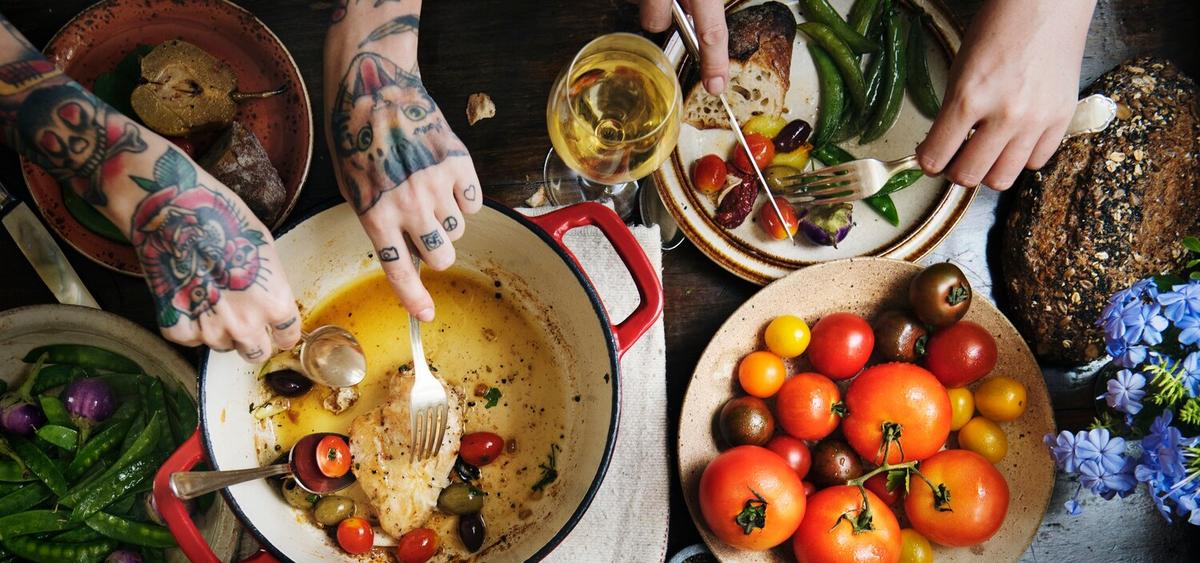
Authentic Italian Cuisine: Beyond Pizza and Pasta
Italian cuisine is renowned worldwide for its simplicity and flavor, yet many people often think of just pizza and pasta when they hear ‘Italian food’. However, the culinary heritage of Italy is vast and varied, reflecting regional specialties and ingredients that go far beyond these popular dishes.
Exploring Italian Cuisine: A World Beyond Pizza and Pasta
While pizza and pasta have become synonymous with Italian food, the true essence of Italian cuisine lies in its rich diversity. Each region in Italy offers unique dishes that highlight local ingredients and traditional cooking methods.
Regional Delicacies
Italy is divided into 20 regions, each with its own culinary identity. For example, Sicily is famous for its seafood dishes such as arancini and caponata, while the northern region of Piedmont is known for its truffles and bagna cauda.
Expert Insight
Renowned chef and culinary expert, Giorgio Locatelli, emphasizes the importance of regional dishes, stating, “Understanding the regional differences in Italian cuisine is key to appreciating its richness and diversity.”
Beyond the Stereotypes
Italian cuisine also includes a variety of meats, cheeses, and vegetables. Dishes like osso buco from Lombardy and ribollita from Tuscany showcase the depth of flavors beyond the typical Italian fare.
Statistics and Research
According to a study by the Italian Ministry of Agriculture, Italy exports over 350 varieties of cheese, highlighting the country’s commitment to preserving its culinary traditions.
Personal Experience
During a trip to Italy, I discovered the joy of authentic Italian cuisine by attending a cooking class in Bologna. We prepared traditional dishes like tortellini in brodo and lasagna alla bolognese, which were both a revelation in taste and texture.
Actionable Tips
- Explore Italian cookbooks that focus on regional cuisine to broaden your culinary repertoire.
- Visit local Italian markets or specialty stores to source authentic ingredients.
- Try cooking lesser-known Italian dishes at home, like cacciucco or vitello tonnato.
Experiment with traditional Italian herbs and spices like oregano, basil, and rosemary to add authentic flavors to your dishes.
Comparison Table: Italian Dishes by Region
| Region | Signature Dish |
|---|---|
| Sicily | Arancini |
| Tuscany | Ribollita |
| Piedmont | Bagna Cauda |
| Lombardy | Osso Buco |
| Emilia-Romagna | Tortellini |
| Veneto | Risotto |
| Campania | Parmigiana |
| Lazio | Cacio e Pepe |
Frequently Asked Questions
What are some lesser-known Italian dishes?
Dishes like panzanella, frico, and pasta alla gricia are less common but equally delicious.
How can I experience authentic Italian cuisine at home?
Start by sourcing quality ingredients and trying out regional recipes that emphasize traditional cooking techniques.
Conclusion
Italian cuisine offers a treasure trove of flavors and experiences beyond the familiar pizza and pasta. By exploring regional specialties and incorporating authentic ingredients, you can enjoy the full spectrum of Italy’s culinary heritage. So, why not try cooking an Italian dish from a region you’ve never explored before and bring a taste of Italy into your home?